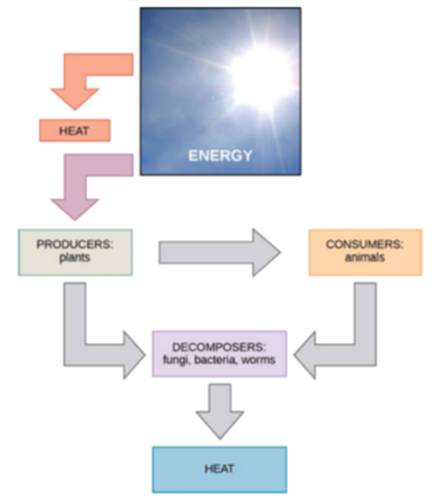This diagram shows a simplified representation of bioenergetics, with arrows representing transfers of energy between various ecological components. Where do humans fall in this diagram?

a. from the sun to decomposers
b. from producers to producers
c. from decomposers to consumers
d. from consumers to the sun
c. from decomposers to consumers
You might also like to view...
Two species of frogs belonging to the same genus occasionally mate, but the embryos stop developing after a day and then die. These two frog species separate by _____
A) reduced hybrid viability B) hybrid breakdown C) reduced hybrid fertility D) gametic isolation
The Brazil nut tree, Bertholletia excels (n = 17), is native to tropical rain forests of South America. It is a hardwood tree that can grow to over 50 meters tall, is a source of high-quality lumber, and is a favorite nesting site for harpy eagles. As the rainy season ends, tough-walled fruits, each containing 8-25 seeds (Brazil nuts), fall to the forest floor. Brazil nuts are composed primarily of endosperm. About $50 million worth of nuts are harvested each year. Scientists have discovered that the pale yellow flowers of Brazil nut trees cannot fertilize themselves and admit only female orchid bees as pollinators. The agouti (Dasyprocta spp.), a cat-sized rodent, is the only animal with teeth strong enough to crack the hard wall of Brazil nut fruits. It typically eats some of the seeds,
buries others, and leaves still others inside the fruit, which moisture can now enter. The uneaten seeds may subsequently germinate. Orchid bees are to Brazil nut trees as ________ are to pine trees. A. breezes B. rain droplets C. seed-eating birds D. squirrels E. both seed-eating birds and squirrels
A typical body cell with 23 pairs of chromosomes is called a ________.
A. gamete B. sister cell C. somatic cell D. haploid cell
The stomach produces a hormone that feeds back and acts on the stomach.
Answer the following statement true (T) or false (F)